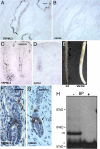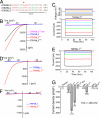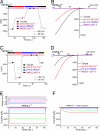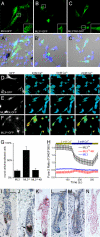Activating mutation in a mucolipin transient receptor potential channel leads to melanocyte loss in varitint-waddler mice
- PMID: 17989217
- PMCID: PMC2084341
- DOI: 10.1073/pnas.0709096104
Activating mutation in a mucolipin transient receptor potential channel leads to melanocyte loss in varitint-waddler mice
Abstract
Transient receptor potential (TRP) genes of the mucolipin subfamily (TRPML1-3 and MCOLN1-3) are presumed to encode ion channel proteins of intracellular endosomes and lysosomes. Mutations in human TRPML1 (mucolipin 1/MCOLN1) result in mucolipidosis type IV, a severe inherited neurodegenerative disease associated with defective lysosomal biogenesis and trafficking. A mutation in mouse TRPML3 (A419P; TRPML3(Va)) results in the varitint-waddler (Va) phenotype. Va mice are deaf, exhibit circling behavior due to vestibular defects, and have variegated/dilute coat color as a result of pigmentation defects. Prior electrophysiological studies of presumed TRPML plasma membrane channels are contradictory and inconsistent with known TRP channel properties. Here, we report that the Va mutation produces a gain-of-function that allows TRPML1 and TRPML3 to be measured and identified as inwardly rectifying, proton-impermeant, Ca(2+)-permeant cation channels. TRPML3 is highly expressed in normal melanocytes. Melanocyte markers are lost in the Va mouse, suggesting that their variegated and hypopigmented fur is caused by severe alteration of melanocyte function or cell death. TRPML3(Va) expression in melanocyte cell lines results in high resting Ca(2+) levels, rounded, poorly adherent cells, and loss of membrane integrity. We conclude that the Va phenotype is caused by mutation-induced TRPML3 gain-of-function, resulting in cell death.
Conflict of interest statement
The authors declare no conflict of interest.
Figures





References
-
- Song Y, Dayalu R, Matthews SA, Scharenberg AM. Eur J Cell Biol. 2006;85:1253–1264. - PubMed
Publication types
MeSH terms
Substances
Grants and funding
LinkOut - more resources
Full Text Sources
Other Literature Sources
Molecular Biology Databases
Miscellaneous

